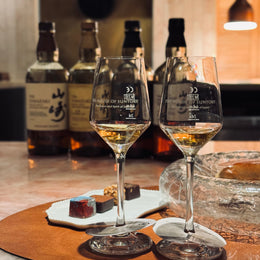
4 Things You Should Know About Spain's Rioja Wines!
With a short and snappy name such as Rioja, it could very well be a brand name for any matter of things. However, seasoned wine connoisseurs will immediately recognise the name as the crown jewel of Spain's wine world.
Despite having a large, esteemed wine culture with over 60 wine-producing regions, Roija might very well be the first (and even last) thing people think about when they think Spanish wines.
What so special? Let's find out!
1. What about Rioja?


The region is located in the southeast of Spain, just north of the Iberian Peninsula. Like New Zealand's Marlborough region, it is as much an area as it is a broad term to describe three wine-growing subregions.
Often considered the crown jewel of Rioja, Rioja Alta boasts higher elevations and a cooler climate, resulting in wines with more structure and elegance. The predominance of clay-limestone soils contributes to wines with higher acidity and aging potential.
Sharing a border with Rioja Alta, Rioja Alavesa benefits from a similar climate and soil composition. However, it often produces wines with a slightly more fruit-forward character.
Last but not least, the low-altitude Rioja Baja experiences a warmer and drier climate. The wines produced here tend to be rounder, fruitier, and have a higher alcohol content. While Rioja Baja often takes a backseat to its northern counterparts in terms of prestige, it produces excellent wines for immediate enjoyment, compared to the longevity of the earlier subregions.
2. Not unlike Champagne, only wine produced in La Rioja can be called as such!
No, for once I'm not referring to the sparkling wine. Remember how only wines from Champagne, France, can be called Champagne? Well, Rioja has a similar rule for its product.
More regulations are in place, of course (More on this later), but essentially, only wine produced within this region can be named or labelled as Rioja, much like its French cousin Champagne.
3. Tempranillo, the ruler of Rioja.

At the heart of Rioja lies the Tempranillo grape, the region's backbone. This versatile grape brings structure, tannin, and fruitiness to the wines. It has been reported that the grape variety makes up to three quarters of the grapes grown in the region.
However, Rioja's complexity comes from blending Tempranillo with other grape varieties like Garnacha, Graciano, and Mazuelo. There are even some that might argue that 100 per cent Tempranillo wines are far and few between.
Along that vein, you wouldn't be wrong in guessing that most of Rioja's wine is of the red variety. Up to 90 per cent of Rioja's product is in red wines, with white and sparkling wines filling up the other 10 per cent.
In fact, the often overlooked white wines are said to be undergoing a sort of renaissance. Grapes like Viura, Malvasía, and Garnacha Blanca are used to produce fresh and vibrant white wines called Rioja Blanco. Some producers are even experimenting with international varieties like Chardonnay and Sauvignon Blanc.
4. Rioja wines are classified according to their different aging processes, with four different categories.
Rioja's wines are particularly valued for their longevity, and as such, have a certain culture that revolves around their aging processes. To that end, they came up with a classification system for consumers to better understand how and which wines are aged.
Wines in Rioja are controlled by the local DOC Rioja (Denominación de Origen controlada Rioja). Differing slightly from the Spanish DOS, the extra “C” is only given to aged wines from Rioja.
Joven: Young wines that are more or less unaged. Producers that don't want to be constrained by the below restrictions typically label their wines as such.
Crianza Rioja: These wines are aged at least two years before sale, and must spend at least a year in a barrel before continuing its aging journey in a bottle.
Reserva Rioja: At least three years spent aging, with at least one of these years being aged in oak barrels.
Gran Reserva: At least four years of aging, with a minimum of two years spent in oak.
Bottom Line:
At the end of the day, Rioja is a cornerstone of Spanish winemaking, offering a harmonious blend of tradition and modernity. Secreted away in Spain, it is the place to be if you're a Tempranillo lover, and its wines certainly won't disappoint. As an added bonus, whether you want it aged or not, Rioja caters specifically to the tastebuds of any discerning wine lover.
 |
Lok Bing Hong A budding journalist that loves experiencing new things and telling people's stories. I have 30 seconds of coherence a day. I do not decide when they come. They are not consecutive. |







